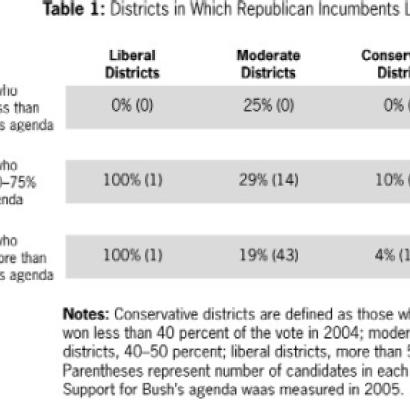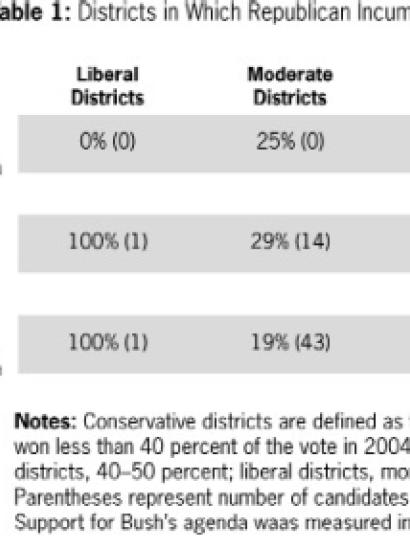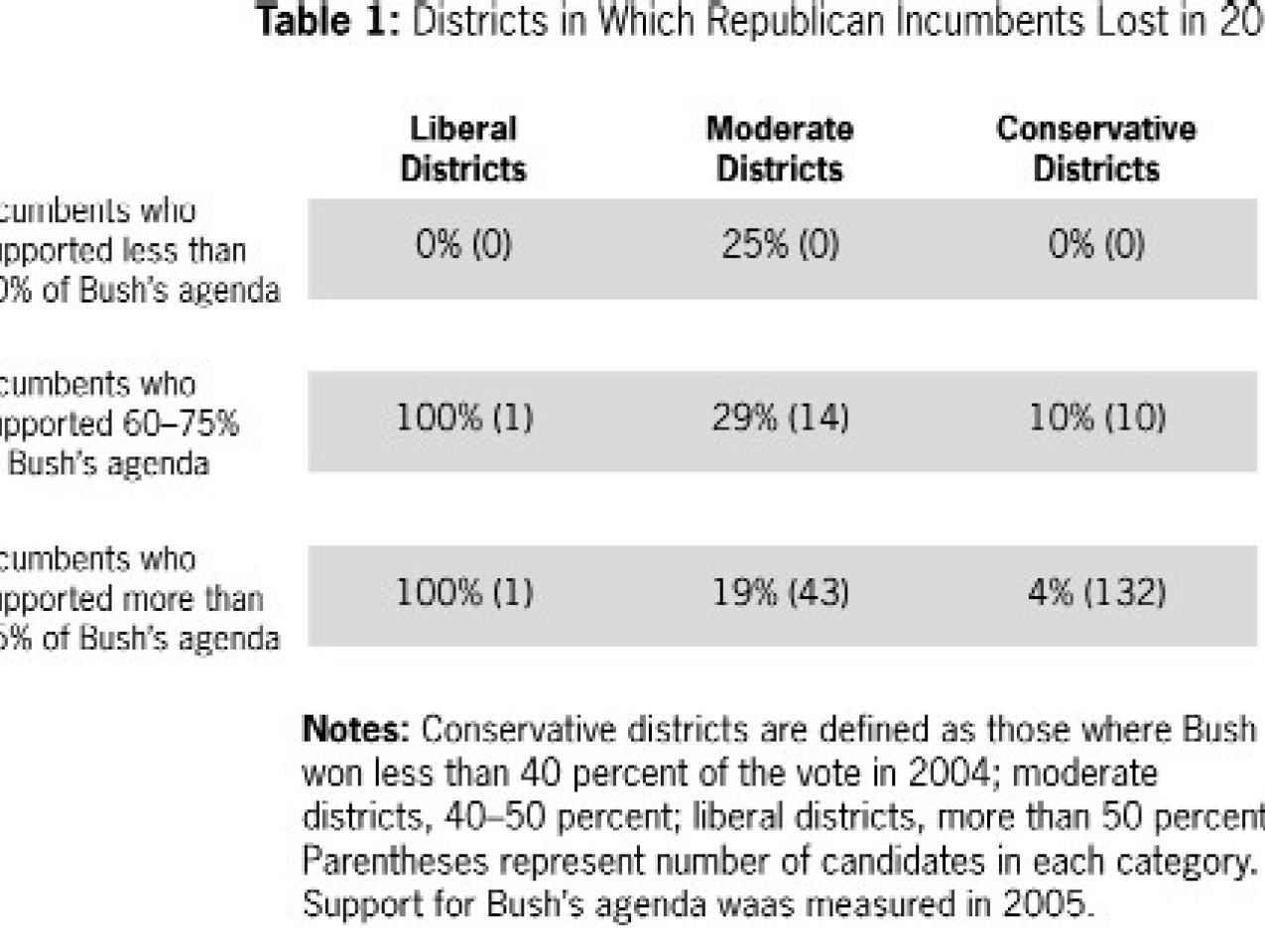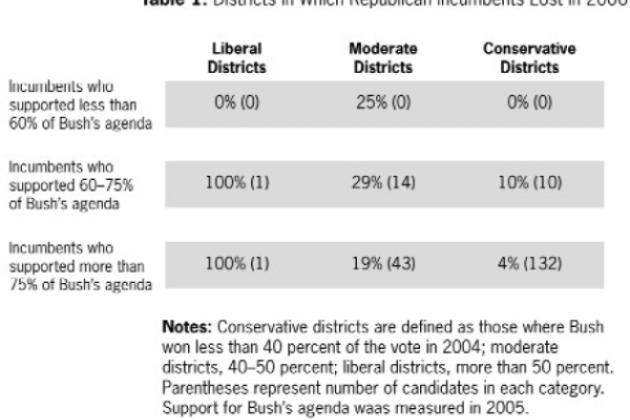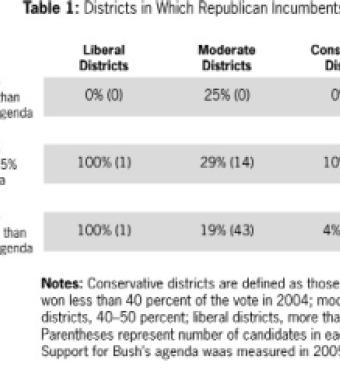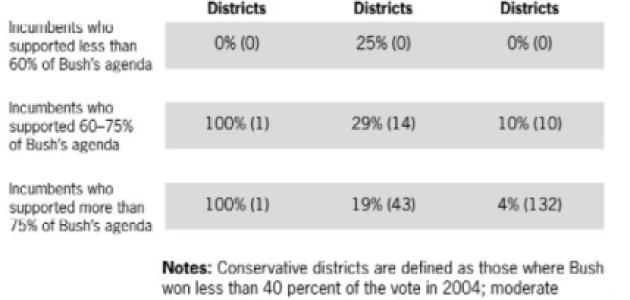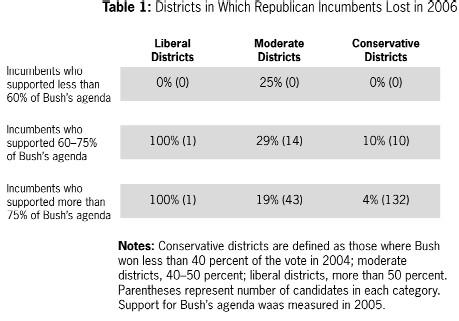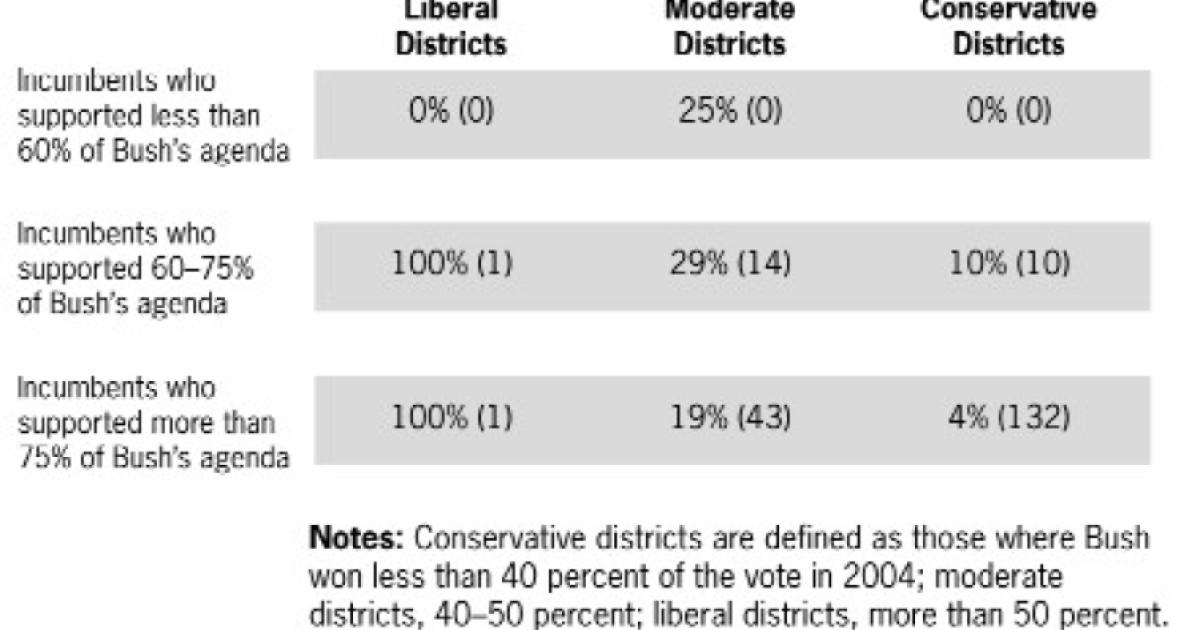- Politics, Institutions, and Public Opinion
- Campaigns & Elections
- The Presidency
The 2006 elections brought Democratic majorities to the House of Representatives and the Senate for the first time since 1994. The natural inclination of commentators and pundits was to compare the 2006 elections with the 1994 results. On its face the comparison seems legitimate: The swing away from the other party in both elections was more than 5 percent; the new majority party had been in the wasteland for at least a decade; and large numbers of incumbents in both elections had been defeated. Closer analysis shows that there are significant differences between the two elections. We begin by analyzing the 1994 election results.
The results of the 1994 national elections were by all accounts extraordinary. The Republican Party’s victory was historic in its depth and breadth. The party gained 52 seats in the U.S. House of Representatives, eight seats in the U.S. Senate, and 11 governorships, and it took power in 15 state legislative chambers. The outcome in the House was particularly startling, as Republicans seized control for the first time in 40 years. Not only did Newt Gingrich become speaker of the House, but his predecessor, Tom Foley, was not even reelected. Moreover, almost no one with even a remotely plausible claim to disinterestedness had predicted it. Pundits, pollsters, and political scientists grossly underestimated how large the swing toward the Republicans would be. Most had predicted Democratic losses in the range of 25 to 30 House seats—making the average forecast off by nearly 100 percent.
| The more the 1994 Democratic incumbent voted in support of Clinton’s positions, the worse he or she did. |
A number of factors were said to account for the Republican victory. Among them were turnout, the Ross Perot factor, a high number of incumbent losses, and regional variation—for example, South versus New England. However, postelection analyses showed that none of the factors mentioned above determined the Republican victory in 1994. Turnout was definitely not a factor in Republican seat gains, as neither the level of turnout in 1994 nor the difference in turnout from 1992 to 1994 was related to electoral turnover. The Perot factor prominent in many analysts’ interpretation of the Republican victory is ambiguous, and the Perot vote was not a predictor of Republican victories. There appeared to be a genuine decline in incumbency advantage under way as the freshman class of 1992 received a smaller-than-usual second-election boost. Important regional variations figured in the Republican success, but it was impossible to distinguish between long-term realignment and temporary defection. In short, none of these factors was sufficient to explain the Republican victory in 1994.
Rather than any of these factors, what accounted for the Republican win in 1994 was the defeat of Democratic incumbents who were too supportive of President Clinton’s liberal 1993 agenda. The 1994 congressional elections were the culminating election in a series of post-1970s contests in which Democrats too liberal for their districts were replaced by Republicans. In 1994, Republicans unseated 34 Democratic incumbents; turnout, the Perot factor, and regional differences cannot account for the Democratic losses.
Clinton campaigned in 1992 as a moderate Democrat, but then, once elected, he proposed a legislative agenda that was in many respects on the left. This exposed the moderate and conservative wing of the Democratic Party to an electoral challenge.
For the many Democratic representatives from relatively liberal districts, of course, voting for the president’s policies was no risky venture. The president’s policies were in accord with their constituents’ preferences. Consider, for example, Julian Dixon, an 18-term Democrat from California’s 32nd District. In the 1992 presidential election, an overwhelming 86 percent of the two-party vote in that district went to President Clinton. Congressman Dixon could support the president’s legislative agenda 94 percent of the time and then advertise this loyalty en route to an easy reelection win.
But for many other Democrats, especially those representing more conservative districts, the choice was far more difficult: Vote for a decidedly liberal legislative agenda and risk offending constituents, or vote against the president and the party leadership. Those who supported the president’s legislative agenda took the risk of providing Republican challengers with an obvious line of attack.
| In 1994, a long-term trend was coming to fruition: the matching of conservative constituencies with Republican candidates. |
Take the case of George “Buddy” Darden, a six-term incumbent from Georgia. In 1992, Darden was reelected by a comfortable 14-point margin. Before the election Congressional Quarterly described Darden’s seat as the “toughest plum to pick.” After the election, however, CQ concluded that his challenger’s “unrelenting criticism of Darden for supporting controversial Clinton administration policies, such as the budget-
reconciliation vote in 1993, overshadowed Darden’s efforts to present a centrist image in the mold of the state’s most popular Democratic figure, Sen. Sam Nunn.”
Such anecdotes aside, how important was support for the president’s agenda in contributing to the large loss of Democratic incumbents in the House? Our results (table 1) show that support for the president’s agenda hurt where you would expect it to—in moderate and conservative districts. The table shows the percentage of Democratic incumbents defeated for three categories of district and for three levels of pro-Clinton voting. The district types are based on the 1992 presidential vote and correspond to conservative, moderate, and liberal districts.
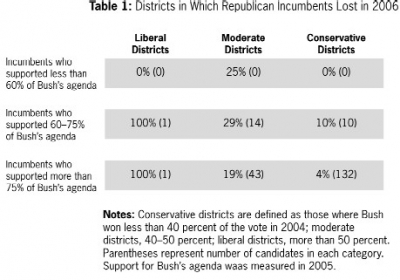
The patterns in table 1 tell a clear story. The more the Democratic incumbent voted in support of Clinton’s positions, the worse he or she did. This is particularly true in conservative districts. In those districts (defined as those where Clinton had won less than 40 percent of the 1992 vote), 63 percent of the incumbents who most strongly supported the president’s positions lost their reelection bids. In contrast, none of their counterparts who supported Clinton’s positions less than 60 percent of the time lost. The same pattern holds, although it is less dramatic, as expected, for Democratic incumbents representing more moderate districts (those in which Clinton got 40 to 50 percent of the 1992 vote).
The Republican gains in 1994 came from conservative and moderate districts with liberal Democratic incumbents. The pattern of Republicans replacing Democrats too liberal for their districts had been going on since at least 1978, and 1994 was the culminating election. In short, the Republican victory was the result of a long-term trend, especially prominent in the Southern and border states and in the Midwest, wherein conservative constituencies and Republican representatives were matched and sorted.
The 2006 Midterm Elections
The Democratic victory in 2006 does not fit this pattern of eliminating out-of-step members and is thus fundamentally different. To demonstrate this, we looked (see table 2) at Republican incumbents sorted by type of district and level of support for President Bush.
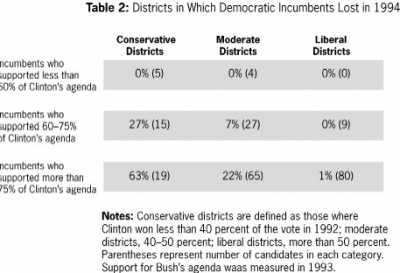
Table 2 arrays the 2006 election in the same way as the 1994 election: three levels of presidential support, by three categories of district. The most obvious result is that 2006 does not look like 1994. Only two Republicans represented liberal districts, and they both lost. The ideological sorting that culminated in the 1994 election left few out-of-step members. You would also expect that Republican incumbents who voted more often with the president and who came from moderate districts would lose more often than those who voted less often with the president. But the results show no relationship between support for the president and reelection in moderate districts—19 percent of strong Bush supporters lost, compared to more than 25 percent of weak supporters. In the same vein, conservative districts should have been safe for incumbents, yet six representatives from such districts lost, even though they were strong supporters of the president.
In short, as postelection polls showed, there was a swing against Republicans because of the war in Iraq and corruption in Washington, and it was across the board. In contrast, the 1994 election was characterized by the replacement of Democrats out of line with their districts by Republicans.
| Last year, there were only two Republicans representing liberal districts, and they both lost. The ideological sorting that culminated in the 1994 election left few out-of-step members. |
The Senate results in 2006 punctuate the point. Senators Burns (Montana), Allen (Virginia), Talent (Missouri), Chafee (Rhode Island), and De- Wine (Ohio) all voted in line with their states, and all lost because of the general electoral swing, not because they were voting out of step. In contrast, the Republican victory in 1994 replaced senators like Sasser (Democrat of Tennessee) who were voting out of line with their states’ preferences. Given this important difference between 1994 and 2006, what are the implications?
The implications
The first is that there are far fewer out-of-step members in 2006 than there were in 1994. The swing to Republicans in conservative to moderate districts, and to Democrats in liberal districts in the Eastern and mid-Atlantic states, had by 2006 left few representatives very out of line with their constituents. In 1994, there were 34 Democratic incumbents in conservative districts; by 2006 there were only two Republicans in liberal districts. This sorting means that who controls Congress is decided in moderate districts and that the number of such seats is declining.
The second implication is that in the 2008 House elections (depending in part on whom the Republicans nominate for president), the newly elected Democrats from the conservative and moderate districts can expect to have strong, well-funded Republican opposition; there are enough such districts to place the Democrats’ majority at stake.
Finally, what would put these vulnerable Democrats most at risk in 2008 is any move by the left in their party to reestablish a left-of-center agenda featuring more taxes, universal and government-paid health care, perceived laxness on terrorism, and so on. Such a move to the left would place the newly elected Democrats in a vulnerable position, just as Clinton in 1994 put their similarly situated predecessors in an untenable position. The good news for the Democrats is there are not as many seats at stake in 2008; the bad news is that the Republicans need to take only 16 of them to regain the House.








